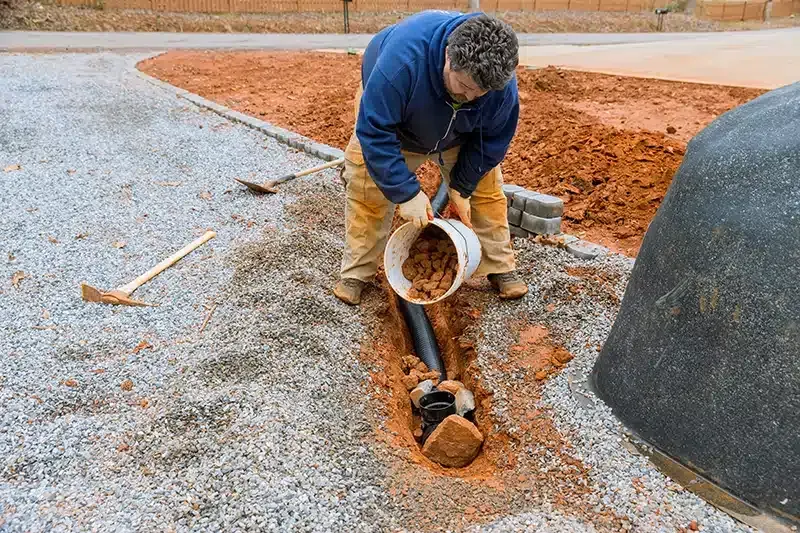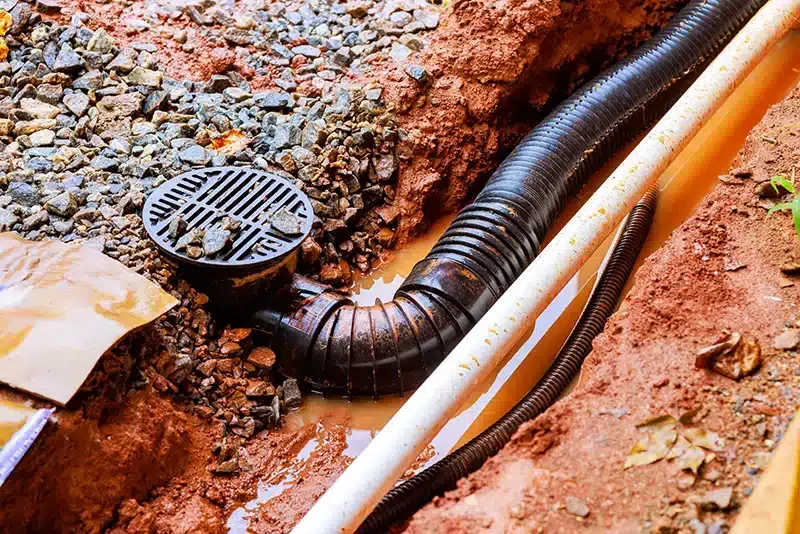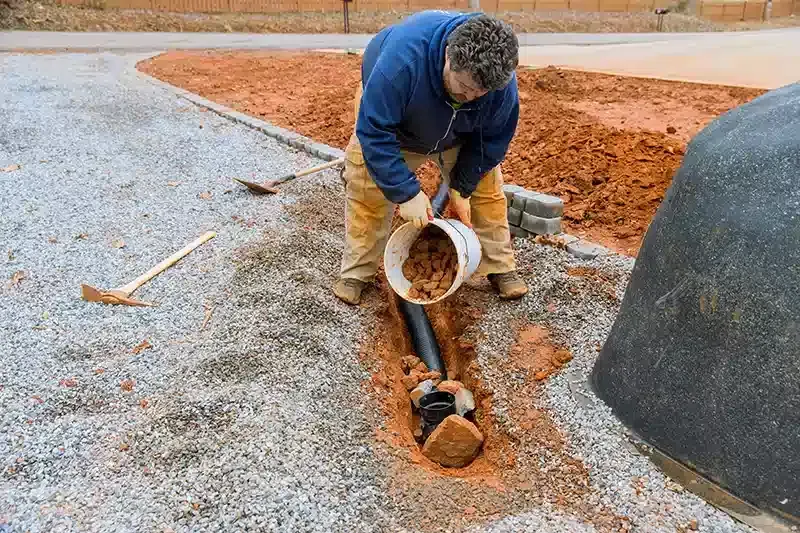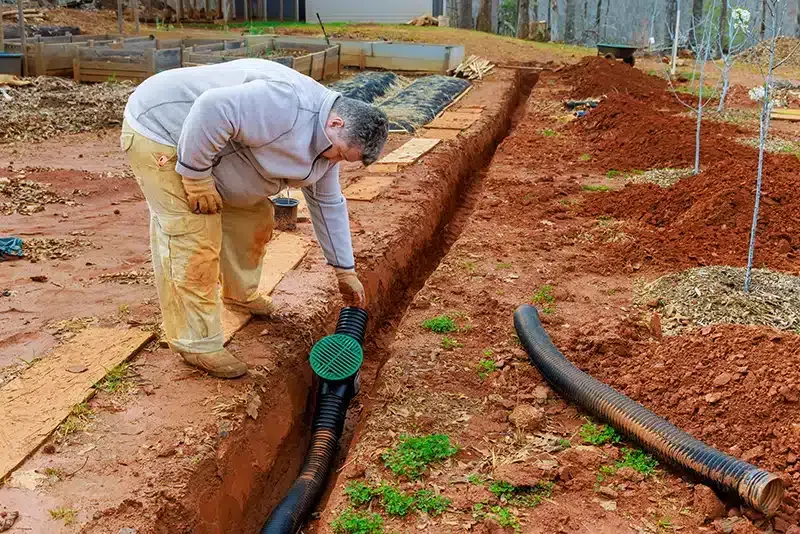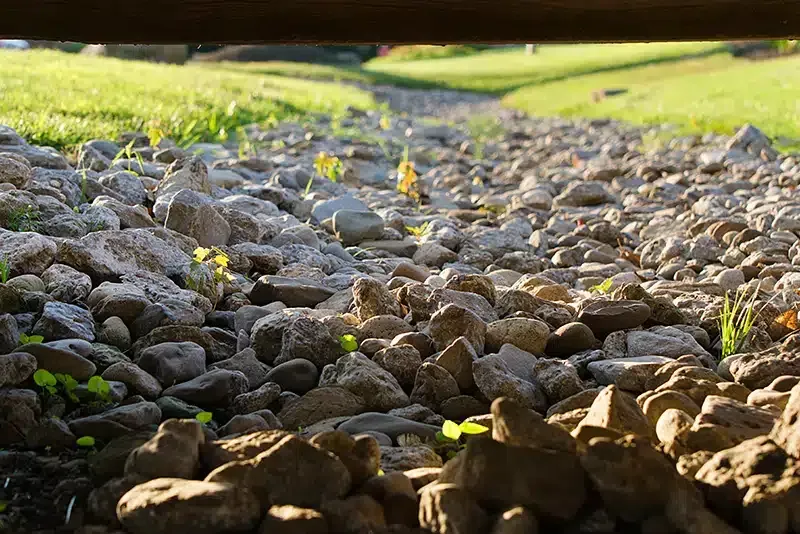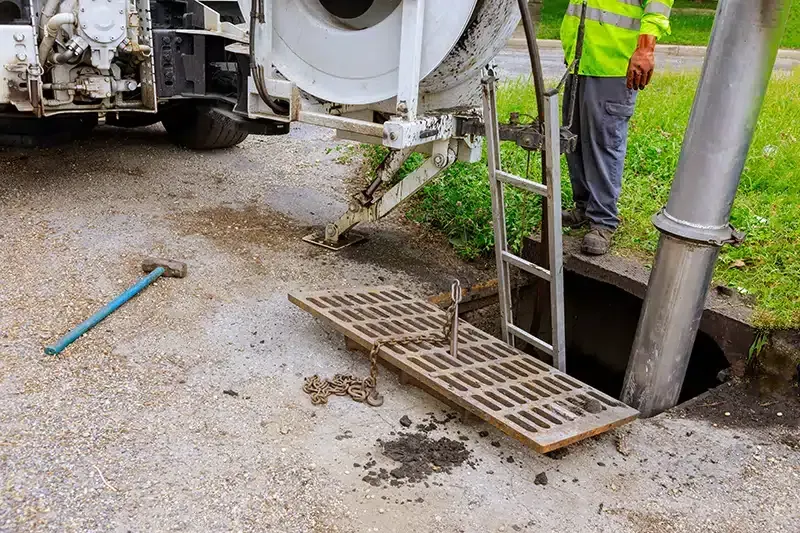How Do Commercial French Drain Services Handle Large Properties?
How Do Commercial French Drain Services Handle Large Properties?
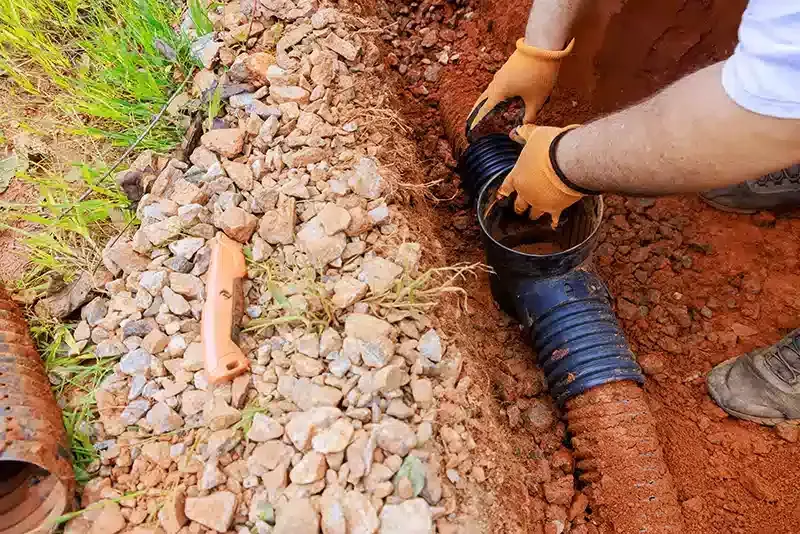
Large commercial properties—such as office parks, retail centers, schools, or industrial sites—face significant water management challenges. Heavy rainfall, expansive landscaping, and sprawling pavement areas often lead to pooling water, soil erosion, and foundation issues.
That’s where French drain systems come in. While the concept of a French drain is simple, installing and maintaining one on a large commercial site requires advanced planning, engineering expertise, and specialized equipment.
In this blog, we’ll explain how commercial French drain services handle large properties effectively, ensuring long-term drainage solutions that protect structures, landscapes, and investments.
Comprehensive Site Assessments and Planning
The first step in managing drainage on a large property is understanding the full scope of the water issues.
- Conduct topographic and soil analysis: This determines how water moves across the property and how well the soil absorbs it.
- Evaluate existing drainage infrastructure: Contractors assess current systems to decide whether to replace, expand, or integrate with a new French drain.
- Create a custom drainage design plan: A well-designed layout considers slope, water volume, building proximity, and utility locations.
- Obtain permits and meet local codes: Large-scale projects often require municipal approval and adherence to strict building codes.
Use of Heavy-Duty Equipment and Materials
Large commercial properties require more robust materials and machinery than typical residential jobs.
- Deploy trenchers and excavators for efficient digging: These machines speed up the process and ensure uniform trench depth and slope.
- Install commercial-grade perforated piping: Durable, high-capacity pipes are used to withstand heavy water flow and prevent collapse.
- Utilize heavy filter fabric and clean gravel: Quality materials reduce clogging risks and support long-term system performance.
- Add access points for maintenance: Clean-out ports and inspection chambers are built into make future servicing easier.
Strategic Zoning for Effective Drainage Coverage
Instead of a single drain, large areas are often divided into multiple zones to improve control and efficiency.
- Break down the property into drainage zones: This approach targets problem areas individually and prevents system overload.
- Install multiple drain lines as needed: Parallel or branching lines allow water to be collected from broad or segmented sections of the site.
- Integrate with downspouts, sump pumps, and surface drains: Combining systems helps manage runoff from rooftops, parking lots, and landscaped areas.
- Direct water to safe discharge areas: Engineers design the system to release water into city sewers, retention basins, or natural waterways—core components of effective commercial stormwater solutions.
Ongoing Maintenance and System Monitoring
Regular maintenance is essential to preserve function and avoid costly repairs.
- Schedule routine inspections: Technicians monitor the system for blockages, damage, or shifting soil that could affect performance.
- Flush the system periodically: High-volume water or jetting tools clear out sediment and debris that accumulate over time.
- Repair or replace damaged sections proactively: Catching small issues early reduces the need for larger, more disruptive repairs.
- Monitor discharge areas for erosion: Keeping outlet zones stable and secure prevents new drainage problems from forming.
Special Considerations for Property Use and Environment
Different types of commercial properties have unique drainage demands based on how the land is used.
- Account for high-traffic areas and heavy loads: Drains near loading docks or driveways are reinforced to handle pressure from vehicles.
- Adapt to landscape and irrigation systems: Drainage must work alongside landscaping features and not disrupt plant health.
- Ensure compliance with environmental standards: Systems may be designed to filter pollutants and protect groundwater in sensitive areas.
- Design for future development: Scalable drainage systems allow for property expansion without requiring a complete redesign.
Handling drainage on large commercial properties takes more than digging trenches—it requires expert planning, specialized tools, and a deep understanding of the site’s needs. Commercial French drain services are equipped to handle complex layouts, high water volumes, and environmental regulations.
With the help of a licensed French Drain Contractor and a solid maintenance plan, property owners can protect their investment, reduce liability risks, and maintain a safe, dry environment year-round.
